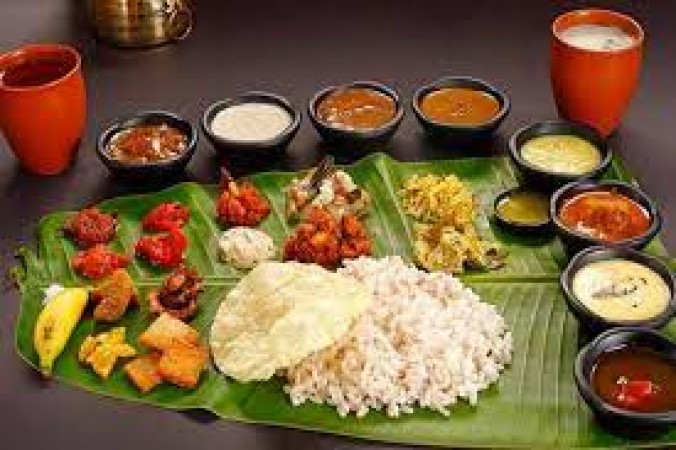
Eating on banana leaves is an age-old practice that has been a part of traditional cultures in various regions around the world, especially in South and Southeast Asia. Beyond being a cultural custom, using banana leaves as plates has numerous benefits, including environmental sustainability and potential health advantages. Eating on banana leaves is a beautiful tradition that not only showcases cultural heritage but also aligns with eco-friendly practices. Beyond being biodegradable and sustainable, banana leaves offer some health benefits and enhance the dining experience with their unique aroma and flavor. Embracing this tradition can be a meaningful way to reconnect with our cultural roots and contribute to environmental conservation, while also promoting a sense of togetherness and community during shared meals.
Using banana leaves as plates for meals holds deep cultural significance in many communities. It is considered a symbol of hospitality, warmth, and respect for guests. In some cultures, serving food on banana leaves is a traditional way to celebrate festivals, weddings, and special occasions. One of the most prominent reasons for eating on banana leaves is its eco-friendliness and sustainability. Unlike disposable plates made of plastic or paper, banana leaves are biodegradable and compostable. This practice significantly reduces waste generation and helps in preserving the environment. Banana leaves possess natural antimicrobial properties that can help in keeping food fresh and safe for consumption. The leaves have a waxy surface that inhibits the growth of bacteria and prevents food contamination.
Eating on banana leaves is believed to enhance the flavor and aroma of the food. The leaves impart a subtle, earthy taste to the dishes, adding a unique touch to the dining experience. Banana leaves are not just eco-friendly; they also offer some nutritional benefits. While they are not meant to be eaten, the food placed on the leaves can absorb some of the beneficial compounds present in them, such as polyphenols and antioxidants. Beyond the cultural and environmental aspects, using banana leaves as plates has some practical advantages as well. The large size of banana leaves provides ample space for serving an entire meal, including various dishes and accompaniments. They are also flexible and can be easily folded or rolled to create makeshift bowls for soupy or semi-liquid dishes. Eating on banana leaves fosters a sense of community bonding and sharing. When a group of people sits together and eats from a communal banana leaf, it creates a feeling of togetherness and unity.
While the practice of eating on banana leaves continues to thrive in many regions, it has faced some challenges in the face of modernization. In urban areas, disposable plates and cutlery have become more common due to convenience and time constraints. However, efforts are being made to revive the use of banana leaves, especially in eco-conscious circles and during cultural events.
Also read -Hair Care Tips: Unlocking the Secrets to Healthy and Gorgeous Hair